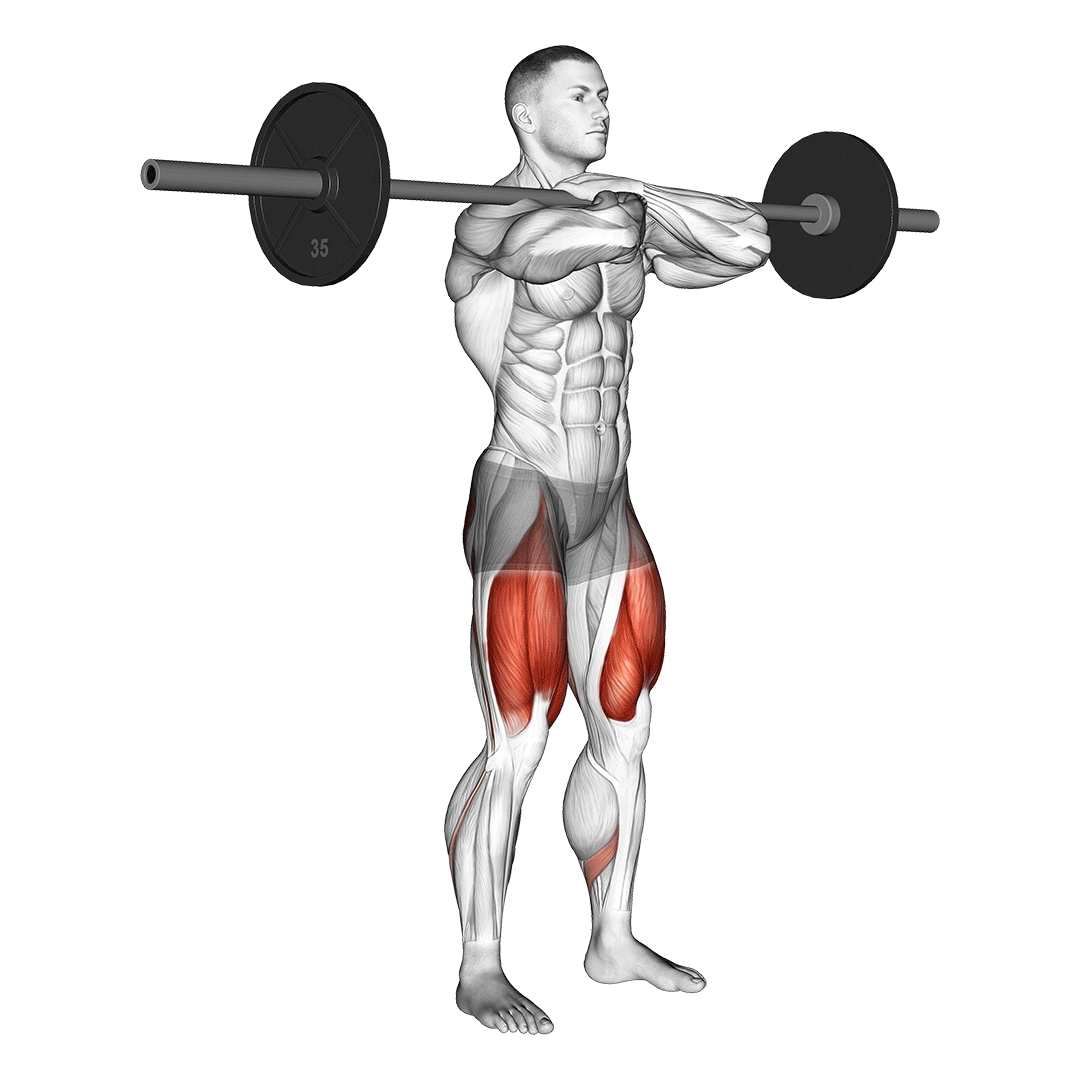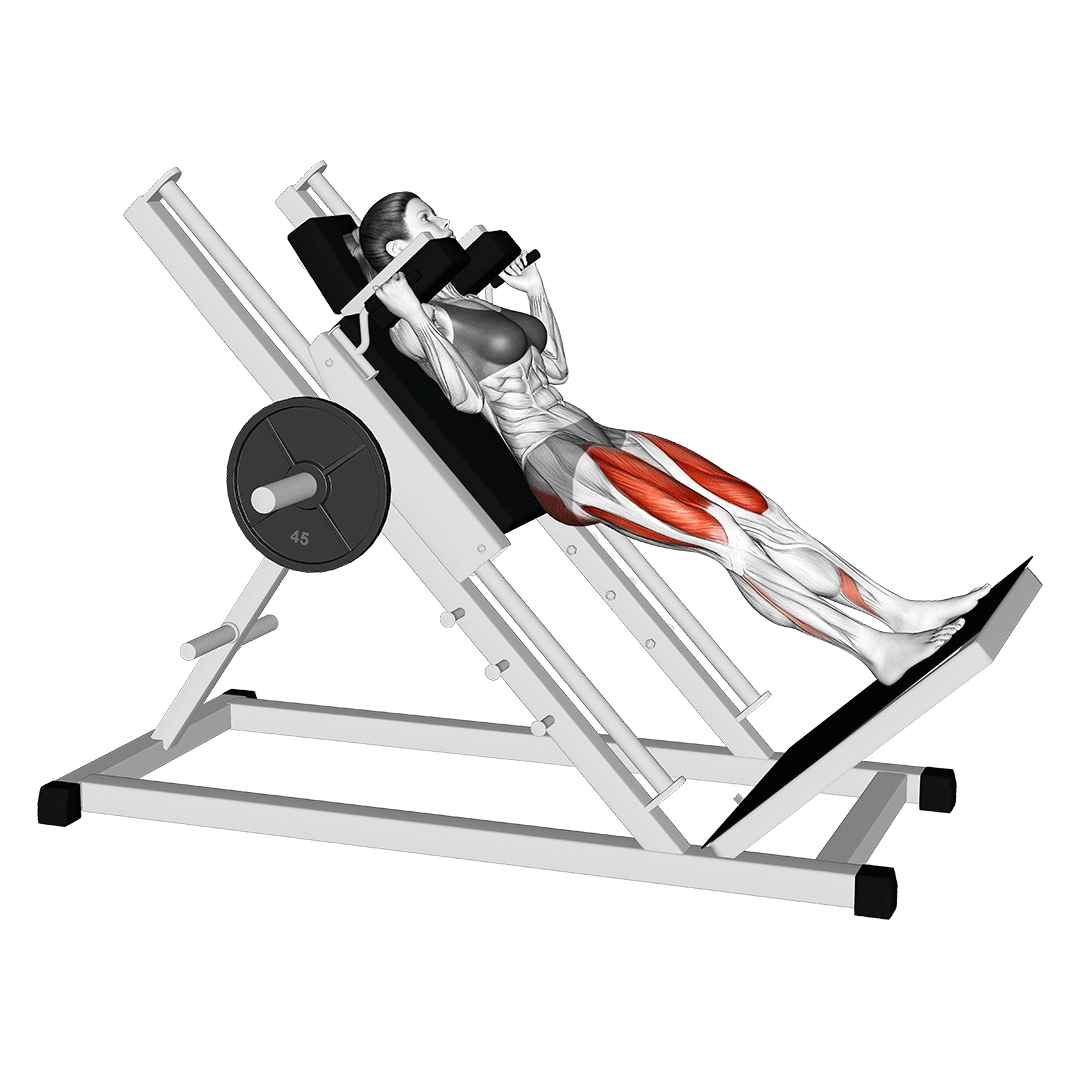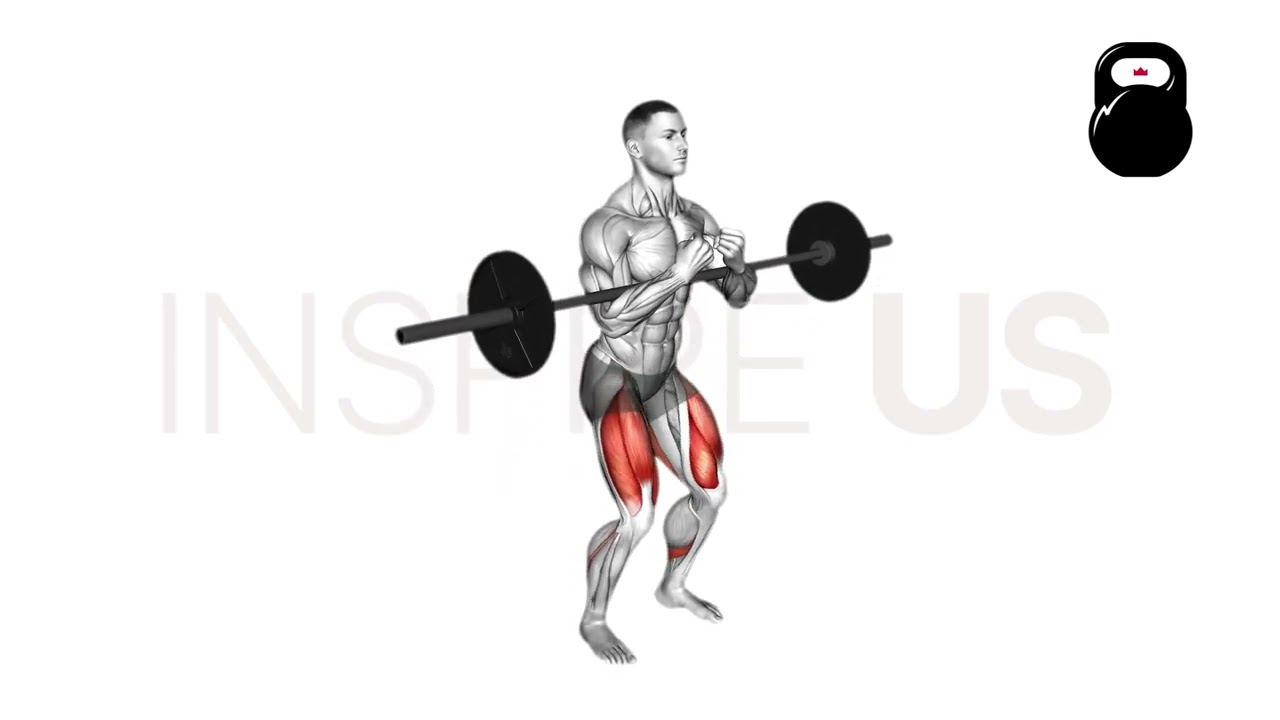Zercher Squat: Benefits, Muscles Worked, and More
The Zercher squat is a classic inclusion into many advanced weightlifting programs geared towards Strongman competitors, powerlifters and other types of strength-based athletes.
Despite its widespread usage, the Zercher squat does indeed have a few drawbacks that make performing it a technical decision. Athletes should weigh its benefits against its disadvantages to ascertain whether it’s the correct exercise for their strength program.
Fortunately, if you engage in a sport or career that requires a similar movement pattern to the Zercher squat, then it is the right exercise for you. In this article, we will discuss how to perform it correctly, the benefits it offers and how best to take advantage of such benefits.
What is the Zercher Squat?
The Zercher squat is a closed chain free weight compound exercise primarily performed so as to build specificity for anterior-loaded squatting movements.

Activities like performing a front squat, carrying an atlas stone or lifting an immobile patient off the floor are all good examples of such movements.
Zercher squats are of particular note for having the lifter carry a barbell in the crook of their elbows as they perform a front squat.
This includes otherwise unrelated muscles like the biceps and deltoids into the muscular recruitment pattern, and exemplifies the already-present benefits of performing squats with an anterior loading position.
Is the Zercher Squat Right For You?
First things first - the Zercher squat is not a novice-level exercise. There is a real risk of spinal strain and tearing of the biceps if performed incorrectly or while in poor condition.
However, even if you are a relatively experienced lifter, the Zercher squat still has to fit the specific needs of your program.
If you regularly engage in movement patterns that replicate that of the Zercher squat, wish to further build upon your front squat benefits or otherwise wish to target the quads to an even greater degree - then yes. The Zercher squat is right for you.
How to Do a Zercher Squat
To perform a repetition of the Zercher squat, the lifter will begin by unracking a loaded barbell in the crook of their elbows. The upper arms should be close to the sides of the torso with the hands either raised palms-inwards or clasped together at chest-height.
Apart from this positioning of the arms, other tenets of proper front squat form should also be followed. Brace the core, keep the entire spine neutral and ensure that the upper back remains uncurved and as upright as possible.
The feet should be set slightly wider than shoulder-width apart, toes pointing forwards. In comparison to conventional back squats, the Zercher squat is slightly wider so as to account for the positioning of the arms.
Now in the correct stance, the lifter will perform an otherwise ordinary front squat. This is done by bending at the knees and pushing the pelvis backwards - keeping focus on maintaining a vertical torso throughout the movement.
Some slight rounding of the upper back may occur. This is entirely fine, so long as it is not to excess and the remaining portions of the back are in a neutral curvature.
Once the squat is deep enough, the lifter’s elbows will either prevent them from squatting lower or fit between the knees. If the former, the stance is likely too narrow. Widen as needed.
Now at parallel depth or lower, the lifter drives through their heels so as to “push the floor away, rising back into an upright position. At this point, the repetition is complete.
If you have trouble keeping the bar in your arms due to discomfort, reduce the weight and look into using barbell pads. Avoid “curling” the bar, as this can lead to bicep tears if performing a heavy set.
What Muscles are Worked by Zercher Squats?
Zercher squats are a compound movement, meaning that multiple muscles are used to move all joints involved.

However, not all of these muscles are contracted in the same way. Those that feature eccentric or concentric contraction are dubbed “mobilizer” or “mover” muscles, whereas those that only contract isometrically are called “stabilizers”.
Mobilizer Muscles
Zercher squats primarily target the quadriceps femoris - far more so than even the back squat due to the position of the bar. Of course, this is in addition to the hamstrings and the glutes.
Stabilizer Muscles
Apart from the aforementioned muscle groups, the Zercher squat will also contract the muscles of the core and erector spinae to a highly intense level.
In comparison to back squats, the erector spinae are worked even harder as the lifter must rely on them to maintain an upright torso despite the anterior position of the load.
Furthermore, Zercher squats also include the anterior head of the deltoids and the biceps brachii through static contraction.
Note that the biceps and shoulders should not be moving whatsoever throughout the exercise, hence the fact that they are solely contracted isometrically.
What are the Benefits of Doing Zercher Squats?
Apart from building general lower body muscle mass and strength, Zercher squats also offer the following benefits.
Emphasizes the Quadriceps and Back Stabilizer Muscles
Zercher squats place greater emphasis on the quads and those muscles responsible for maintaining a vertical back.
This (in part) is due to the position of the bar at the front of the body - of which forces the quadriceps to work harder and requires greater isometric effort from the erector spinae, internal obliques and other posterior core muscles.
Apart from the anterior loading position, the more forward angle of the toes and the fact that the knees will track further forwards also equates to greater quadriceps recruitment.
For a more comprehensive lower body workout, ensure that the Zercher squat is also performed with a more posterior-focused supplement. A few good examples are hip thrusts, machine leg curls and most deadlift variations.
Excellent for Improving Squat Technique
Because of how technical the Zercher squat can be, advanced lifters wishing to refine their conventional squat technique may find the Zercher variant to be the perfect tool.
This is especially applicable for those that wish to practice maintaining proper spinal curvature and torso orientation while under significant stress.
Although not a one-to-one replication of the conventional squat’s positioning, the Zercher squat will help lifters master maintaining these aspects of their form - regardless of what squat variation is being performed.
Even in cases where the lifter has already mastered such mechanics, the Zercher squat can help reveal minute issues in their form as well. Problems with stance width, inflexible ankles or sticking points caused by poor hip positioning all become obvious when the Zercher squat is performed.
Easier on the Lower Back and Spine
While nobody with a back injury should be squatting - anterior loaded squat variations like the Zercher squat or goblet squat are both significantly more forgiving on the spine and its nearby soft tissue structures.
In comparison to the back squat that places the load atop the back, the Zercher squat does not vertically compress the spine.
Depending on the sort of injury that the lifter may be at risk at, this can reduce their risk of injury while still allowing for a heavy lower body compound movement to be performed.
Of course, this benefit is assuming that the Zercher squat is itself being performed with the correct form, and that the lifter is ensuring they are properly contracting their back muscles to maintain an upright torso.
Carryover to Many Functional Activities and Exercises
Zercher squats have recently exploded in popularity due to their carryover to many sport and real-life activities.
Most notable of these are squatting movements that require some sort of load to be held in the arms - such as atlas stone events in Strongman competitions, or even vocation-specific activities like lifting a box from the floor safely.
Though it is indeed true that the Zercher squat is markedly less comfortable and more technical than other squat variations, this doesn’t mean the strength it develops only applies to Zercher squats themselves. Arguably, Zercher squats are far more functional than even the front squat itself.
Limits How Much Weight is Needed
Lifters at the more advanced levels may find that performing a back squat tends to require a significant amount of weight before reaching the desired intensity.
Not only can this be limited by a busy gym or insufficient home-gym equipment, but loading and unloading numerous plates can be time consuming and exhausting.
Fortunately, anterior loaded exercises like the Zercher squat do not require significant amounts of weight to be sufficiently intense. The majority of lifters will find that they need even less weight than they would with front squats - and significantly less than would be needed for back squats.
Common Zercher Squat Mistakes
In order to avoid injury and ensure the Zercher squat is as effective as possible, avoid the following common mistakes.
Curling the Bar
The first and most important mistake to avoid is curling the barbell as it is held in the crook of the elbows.
This may be subconscious as the lifter strains to rise back upwards - or otherwise intentional as the lifter finds their upper torso’s stability waning.
In either case, doing so can potentially lead to bicep tears and other injuries related to overloading the small muscles of the arms or shoulders. While contracting the biceps is entirely fine, avoid allowing them to lengthen or shorten while the barbell is being carried.
Lifters with difficulty preventing this mistake can try experimenting with their grip style. If ineffective, try the Zercher squat alternative exercises mentioned later in this article.
Rounding the Lower or Middle Back
As is the case with practically any heavy exercise, lifters should avoid rounding their spine or back when performing Zercher squats. Doing so will greatly increase the risk of an injury occurring - as well as negate some of the benefits derived from the Zercher squat itself.
In order to help keep the back neutral, the core should be braced, the chest upright and outwards, and the head should remain facing forwards. Other cues more specific to the Zercher squat are keeping the elbows pointed away from the back and preventing the chest from crossing over the knees.
Excessively Narrow Stance
As mentioned at the start of this article, avoid setting the feet the same width as you would with conventional squats.
This bit of advice is primarily to ensure that the arms do not limit your range of motion.
However, adopting a wider stance also aids with keeping the torso more upright by creating a wider angle of the femur within the hip joint. This allows for a less forward tilt to the upper body and greater recruitment of the hip flexor muscles as the squat is performed.
Tracking the Knees Too Far Forwards
Although it is likely that your knees will track further forwards with a Zercher squat than with a back squat, it is best to minimize this forward knee positioning as much as possible. Aim to sit the pelvis back as the descending phase of the movement begins.
Lifting the Same Weight as With Front Squats
While front squats themselves are already significantly lighter than most other squat variations, Zercher squats take this even further due to the manner in which the bar is held.
It is entirely possible for lifters to injure themselves their first time performing the Zercher squat by attempting to lift the same amount of weight as with a front squat. This is a mistake. Instead, try lifting up to 15% less than your working weight with the latter exercise.
Alternatives to the Zercher Squat
If the Zercher squat is too uncomfortable for you - or if you want to try a heavier exercise - try the three alternatives below.
1. Front Squats
Mentioned frequently throughout this article; front squats are the immediate predecessor to the Zercher squat, as it is somewhat less complex and easier to grasp while still replicating much the same mechanics.

Front squats are the ideal substitute to Zercher squats if you have difficulty keeping the bar in the crook of your elbows. That, or if you wish to up the weight capacity of the exercise while retaining the benefits of an anterior loaded squatting movement.
Front squats may even act as a substitute to Zercher squats in cases where no barbell is present, as they can be performed with a wide variety of alternative equipment as well.
2. Goblet Squats
Goblet squats are yet another anterior loaded squat variation. This time, the movement is loaded with the use of a single kettlebell or dumbbell that is held at chest-height in both hands.

The goblet squat features a nearly identical lower body stance to the Zercher squat. In comparison to front squats, there is a greater level of overlap between the Zercher and goblet squat - meaning the benefits are also far more aligned between the two exercises.
Goblet squats are more often used as a higher volume alternative to the Zercher squat in functionally-geared workout plans.
3. Machine Hack Squats
For a more forgiving quad-focused squat variation, the machine hack squat is the perfect option.

Due to its more forward placement of the feet, the quads are also emphasized in a similar manner to Zercher squats. However, unlike the latter, the machine hack squat features many of the benefits intrinsic to machine-based exercises such as self-stabilizing resistance and built-in safety mechanisms.
If you are a novice or have difficulty maintaining proper stability with free weight squats, the Zercher squat can readily be substituted out with the machine hack squat.
Frequently Asked Questions (FAQ)
What are Zercher Squats Good For?
Zercher squats are excellent for building functional strength that carries over to more than just in-gym activities. Strongman competitors, laborers and firefighters can all benefit from performing the Zercher squat.
Why is the Zercher Squat so Hard?
Zercher squats are considerably difficult due to the bar being held in the crook of the elbows. This is not only demanding on the musculature of the entire body, but can also be quite uncomfortable once a certain amount of weight is being lifted.
In order to make the Zercher squat easier, try practicing with front squats and placing pads along the length of the barbell to reduce discomfort.
Are Zercher Squats Better Than Front Squats?
In certain aspects, yes. Zercher squats are more effective than front squats at building functional strength and improving certain aspects of squatting technique.
Closing Thoughts
The Zercher squat is perhaps one of the most effective “odd” lifts out there. When used in the right context, it can take your performance even further.
Zercher squats will develop not only your legs and glutes, but also many other muscles found throughout your posterior chain - especially those responsible for maintaining an upright torso.
However, remember that the Zercher squat is still considered an advanced exercise and should only be performed by experienced weightlifters. It can be quite easy to injure yourself if performing the Zercher squat incorrectly.
If you are unsure of whether you are ready to perform the Zercher squat, try seeking out the advice of a professional coach.
References
1. Kumar, Satheesh & Perumal, Suriya & Subramani, Arumugam. (2020). Influence of Zercher Squat Exercises on Back Strength and Leg Strength among College Basketball Players. Journal of Information and Computational Science. 10. 45-50. 10.12733/JICS.2020.
2. Erdağ, Deniz & Yavuz, Hasan. (2020). Evaluation of Muscle Activities During Different Squat Variations Using Electromyography Signals. 10.1007/978-3-030-35249-3_114.

